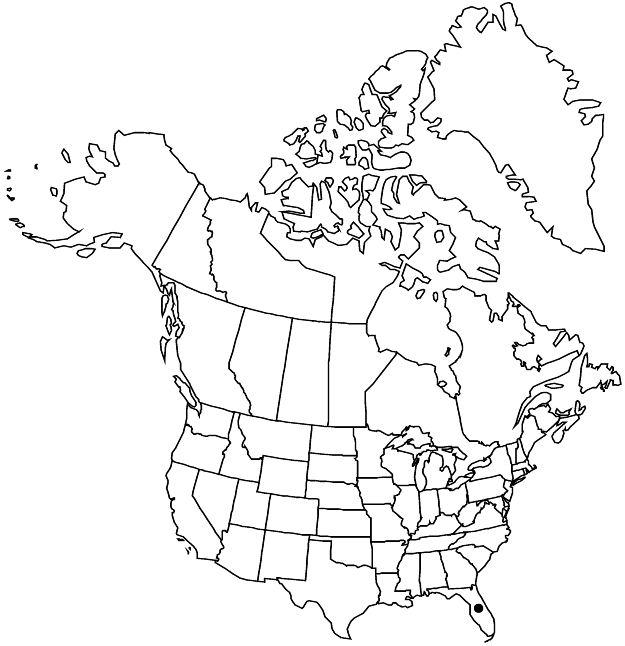Passiflora sexflora
Ann. Mus. Natl. Hist. Nat. 6.: 110, plate 37, fig. 1. 1805.
Stems terete to slightly flattened, densely soft-hairy. Leaves not pungent, densely soft-hairy; stipules linear-setaceous, 2–5 × 0.5 mm, eglandular; petiole eglandular; blade roughly symmetric, 2–10 × 2–15 cm, 2–3-lobed, middle lobe shorter than lateral lobes, lobes unlobed, margins entire; abaxial fine veins prominently raised but obscured by pubescence, abaxial nectaries absent. Floral bracts linear-subulate to setaceous, 2–6 × 0.5–1 mm, margins entire or incised, eglandular. Flowers: floral-tube absent; sepals greenish white, 9–13 × 2–3 mm; petals white, 5–9 × 1–2 mm; corona filament whorls 2, outer filaments purple basally, white apically, linear-filiform, terete, 5–9 mm. Berries blue-black, ovoid, ellipsoid, or subglobose to dorsiventrally compressed, 5–10 × 5–8 mm.
Phenology: Flowering Oct–Mar.
Habitat: Margins of, and sunny gaps within mesic, tropical woodlands over oölitic limestone
Elevation: 0–10 m
Distribution

Fla., Mexico, West Indies (Cuba), West Indies (Hispaniola), West Indies (Jamaica), West Indies (Puerto Rico), Central America, South America (Colombia), South America (Ecuador)
Discussion
Found in the flora area only in extreme southeastern Florida, Passiflora sexflora responds vigorously to moderate disturbance of its forested habitats, with rapid seed germination and plant growth in treefalls or other canopy openings (J. Blakley, pers. comm.). There have been successful attempts at reintroducing it into the wild in Florida (J. Possley et al. 2007), where it is listed as endangered.
Selected References
None.
Lower Taxa
"fine" is not a number.